page 3
~ The Study of Threes ~
http://threesology.org
| Library Science | ||
| Links page 1 | Links page 2 | Links page 3 |
| Number 3 in Asia | Number 3 in the Bible | Number 3 in Mythology | Number 3 in Greek Mythology | Number 3 in Norse Mythology |
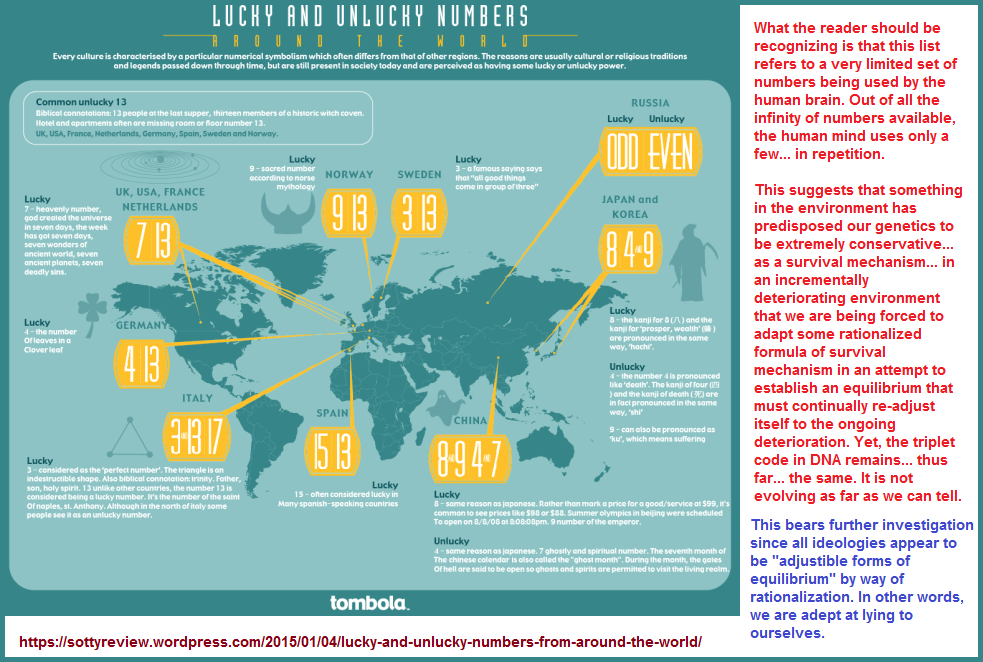

Triablogue: The triple-decker universe Tuesday, July 11, 2006
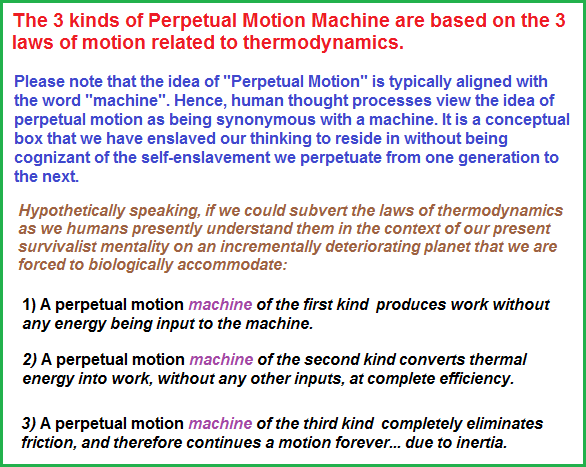
References:
- Perpetual Motion of the 1st, 2nd, 3rd kind by Carlicia Layosa, October 17, 2014
- Perpetual Motion by Kevin T. Kilty
- Perpetual Motion & The Laws of Thermodynamics by Keelty Brassill
- Wikipedia: Perpetual Motion
- Types of Perpetual Motion Machines by Mr. Reid.org

- The Power of Three: Why
Fairy Tales Often Feature a Triple
- Wikipedia discussions about
various "3" denoted ideas
- Wikipedia: Rule of three (writing)
The rule of three is a writing principle that suggests that a trio of events or characters is more humorous, satisfying, or effective than other numbers. The audience of this form of text is also thereby more likely to remember the information conveyed because having three entities combines both brevity and rhythm with having the smallest amount of information to create a pattern. It makes the author or speaker appear knowledgeable while being both simple and catchy.
Slogans, film titles and a variety of other things have been structured in threes, a tradition that grew out of oral storytelling.[4] Examples include the Three Little Pigs, Three Billy Goats Gruff, and the Three Musketeers. Similarly, adjectives are often grouped in threes to emphasize an idea.
The Latin phrase "omne trium perfectum" (everything that comes in threes is perfect, or, every set of three is complete) conveys the same idea as the rule of three.
A triple deity (sometimes referred to as threefold, tripled, triplicate, tripartite, triune or triadic, or as a trinity) is three deities that are worshipped as one. Such deities are common throughout world mythology; the number three has a long history of mythical associations. Carl Jung considered the arrangement of deities into triplets an archetype in the history of religion.
In classical religious iconography or mythological art, three separate beings may represent either a triad who always appear as a group (Greek Moirai, Charites, Erinyes; Norse Norns; or the Irish Morrígan) or a single deity known from literary sources as having three aspects (Greek Hecate, Roman Diana).
A Triad, in a religious context, refers to a grouping of three gods, usually by importance or similar roles. A triad of gods were usually not considered to by one in the same being, or different aspects of a single deity as in a Trinity or Triple deity. Triads of three closely associated deities were commonly found throughout the ancient world, and in particular in the religious traditions of Ancient Greece and Egypt.
The Triple Goddess is a deity or deity archetype revered in many Neopagan religious and spiritual traditions. In common Neopagan usage, the Triple Goddess is viewed as a triunity of three distinct aspects or figures united in one being. These three figures are often described as the Maiden, the Mother, and the Crone, each of which symbolizes both a separate stage in the female life cycle and a phase of the Moon, and often rules one of the realms of heavens, earth, and underworld. In various forms of Wicca, her masculine consort is the Horned God.
The Triple Goddess was the subject of much of the writing of the prominent early and middle 20th-century poet, novelist and mythographer Robert Graves, in his books The White Goddess and The Greek Myths as well as in his poetry and novels. Modern neopagan conceptions of the Triple Goddess have been heavily influenced by Graves, who regarded her as the continuing muse of all true poetry, and who speculatively imagined her ancient worship, drawing on the scholarship, fiction and mythology of his time, in particular the work of Jane Ellen Harrison and other Cambridge Ritualists. The influential Hungarian scholar of Greek mythology Karl Kerenyi likewise perceived an underlying triple moon goddess in Greek mythology. Archaeologist Marija Gimbutas also argued for the ancient worship of a universal Triple Goddess in European cultures but, as with Graves, her generalization of these theories to multiple unrelated cultures, and the unsourced homogenization of diverse cultures into one unified cultural and religious figure, has attracted much controversy. Many neopagan belief systems follow Graves' and Gimbutas' proposed figure of a universal, cross-cultural Triple Goddess, and these ideas continue to be an influence on feminism, literature, Jungian psychology and literary criticism.

What is what3words?
- Science and the Mind, Dr. Roger Penrose, Oxford University (Penrose's 3 Worlds Philosophy)

Aside from the threes in Fairy tales, a researcher of the "threes phenomena" is likely to come across Georges Dumezil's Trifunctional hypothesis that I commonly referred to as the "tripartite ideology" of Indo-European peoples which led me to see a timeline of development with respect to consciousness... or at least an effort by humans to record how they were cataloguing different perceptions of the world.
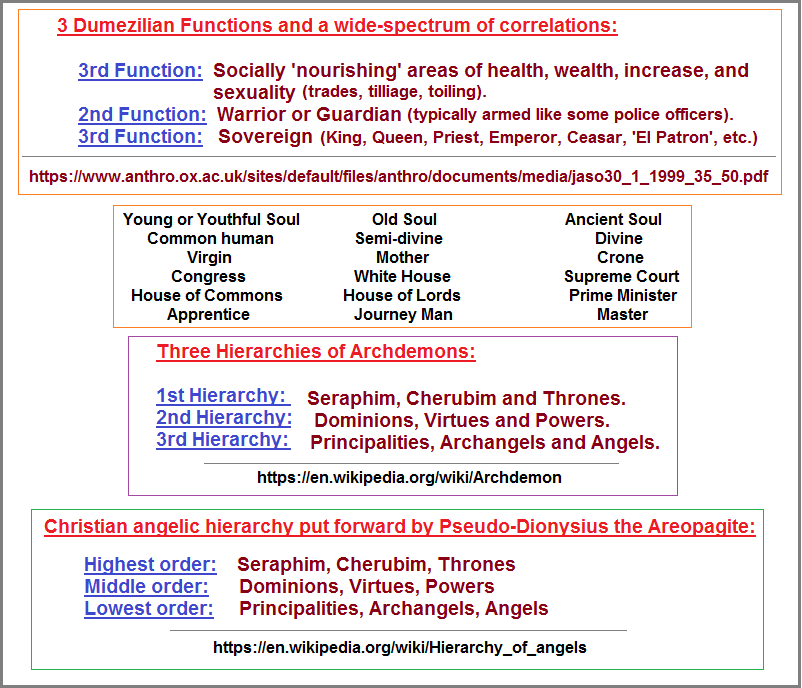
In the instance of transcribing a developmental scenario to the occasion by which humanity has developed a (positive, neutral or negative) interest in one or another number pattern (to be differentiated from those used as markers for organizing research materials), I can readily see a duality mindset in the earlier Chinese culture, (notably the yin/yang perspective) and an assumed singularity amongst the more ancient Africans (in line with the out-of-Africa hypothesis for humanity), due to the need for a mindset consistent for a terrain in which day-to- day survival was paramount and is consistent with the notion of the Triune brain idea of Paul D. MacLean which posits that the human brain transitioned from a more primitive functionality where "survival of the fittest" or "eat/be eaten" (as a predator or as a prey) was the day-to-day dominant "preoccupation".
I was guessing of course, but had to further note that the "later born" Europeans called Americans came to express an abundant usage of three-patterned ideas more so than their "earlier born" European counter-parts, thus serving to suggest that there was a one, two, three developmental sequence for humans to adopt a pattern of thinking along different orientations which were numerically identifiable. An interesting point to make in the case of the Dumezilian controversy is why anyone would want to make a stressed point about something they feel is wrong unless it were a springboard means of presenting an alternative idea? In other words, is it the value of "three" which attracts both (oppose/advocate) sides of the coin? Of further interest is to note that in arguing against the Dumezilian tripartite idea we can find those who come up with views expressing dualities and those who come up with quadrated (quadralineal) systems for identifying functionality, but none of them are taking a step back and recognizing that when taken together, these 2-3-4 ideas comprise yet another tripartite ensemble of consciousness.
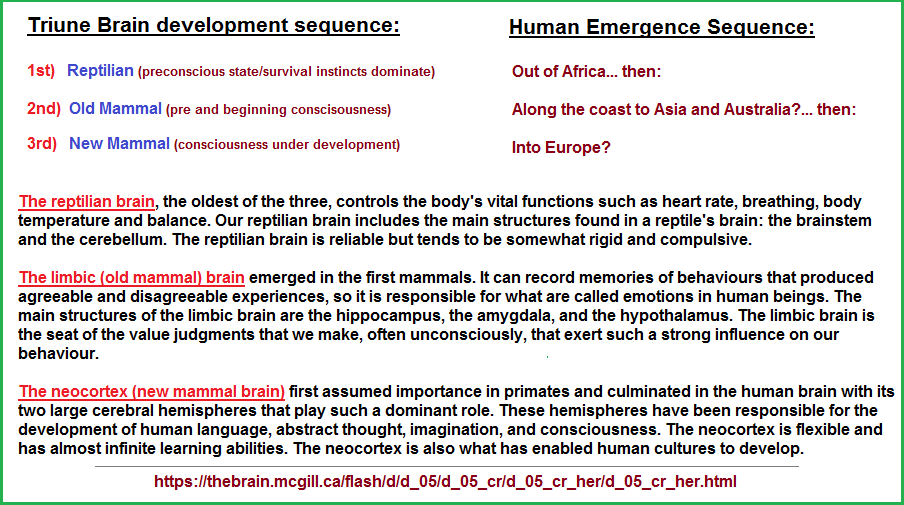
Another pattern which has arisen in the realm of the Dumezilian discussion has been made by Professor Emily Lyle, has already been recognized in other subjects and referred to as a Three to One ratio (3 "2" 1 ratio) sometimes viewed in the format of a 3-in-1, 3-to-1, 1-from-3, out-of-three = one, out-of-many: one (E Pluribus Unum), and may even be labeled a four or 2 X 2, etc., though use of other numbers can produce similar results. One over-riding point to be emphasized is that with so many people in a given society, why are roles subjected to a lowest common denominator type of mentality instead of a greater common denominator or factor as might be suggested by a presumed practice of democracy or greater equality for the greater number of people?
Emily Lyle has offered her own rendition and rearrangement of the Dumezilian scheme, expressing an 'expansive' view basically claiming that the presence of Trifunctional (or certainly triplex) phenomena in cultures beyond the IE does not in fact invalidate Dumezil's theory, but expands its usefulness (e.g. Lyle, 1996, 103: 'Broadening the Perspective on Dumezil's Three Functions', in E. C. Polome (ed.), Indo-European Religion After Dumezil.). However, her reading and penetration of the archaic materials (IE and non-IE) has led her to a type of quadripartite formulation in which three approximately Functional representations, all male, are accompanied and brought into a final unity by a dominant female potency (Lyle 1990, 11-25: Archaic Cosmos: Polarity, Space and Time, Edinburgh: Polygon). This part of her theory has been supported—and specifically in important segments of the IE linguistic-cultural camp—by the investigations of a Swedish scholar, Britt-Mari Nasstrom (1995): Freya: The Great Goddess of the North, Lund: Navapress (Lund Studies in History of Religions, Vol. V.), who found that the Norse goddess Freya/Friggya had an omni-functional association or projection (as she was the wife of the chief god, a battle goddess, and a goddess emblematic and protective of fertility and sexuality), and that this pattern was not at all uncommon elsewhere in the fund of archaic IE materials. While maintaining this possibility, Lyle has also advanced the thesis that the Feminine (which I have capitalized to show the abstraction) may be perceived not as a fourth entity strictly speaking, but as the 'rope' or whole formed by the three strands of the Functions. [H.O.B. note: sounds like an image from genetics referring to amino acids linked on a strand of the double-helix.] Again, this is not necessarily, in her thinking, a conceptualization limited only to the archaic IE thought-world (Lyle 1996: 102-3).
Excerpt from: Playing (with) The Numbers: Variations on a Dumezilian Theme by Dean A. Miller (JASO 3011 (1999): 35-50)
It is of interest to note that those who are professing to be "experts" on language and cognitive linguistics are surprisingly deficient in their presentations as to the inter-connectivity which hearing plays; with the ear being described as part of the brain. It is a simple reference to note that if a person can not hear, their usage of language will be greatly diminished. The following is but one of many excerpts which could be provided to illustrate the presence of "three" patterns in the context, but no reference is made thereto:
Abstract
Cognitive linguistics as represented in this book: (Introducing Cognitive Linguistics by Dirk Geeraerts and Hubert Cuyckens) is an approach to the analysis of natural language that originated in the late 1970s and early 1980s in the work of {the three founding fathers:} George Lakoff, Ron Langacker, and Len Talmy, and that focuses on language as an instrument for organizing, processing, and conveying information. This introductory article sketches the theoretical position of cognitive linguistics together with a number of practical features of the way in which research in cognitive linguistics is organized. Three fundamental characteristics of cognitive linguistics can be derived: the primacy of semantics in linguistic analysis, the encyclopedic nature of linguistic meaning, and the perspectival nature of linguistic meaning. This article also discusses how cognitive linguistics and generative grammar can both proclaim themselves to be cognitive enterprises. The book deals with different conceptual phenomena that are recognized by cognitive linguistics as key concepts: prototypicality, metaphor, metonymy, embodiment, perspectivization, mental spaces, and the like. Each constitutes a specific principle of conceptual organization as reflected in the language.
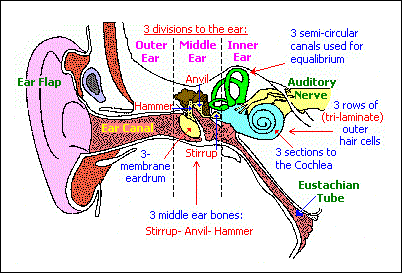
Language 3's page 1
Here's a link about a 3-pattern which has cause some controversy because of a maladapted media and the growing idiocy occurring in the U.S.:
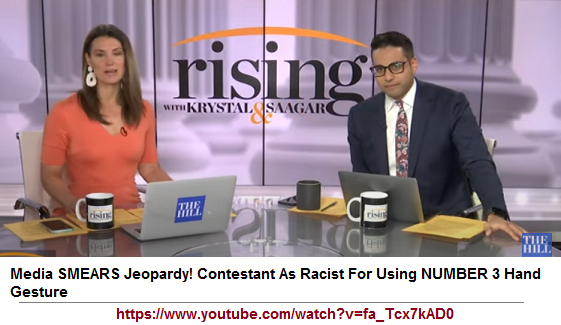
Media SMEARS Jeopardy! Contestant As Racist For Using NUMBER 3 Hand Gesture
With respect to the foregoing link about the usage of three fingers:

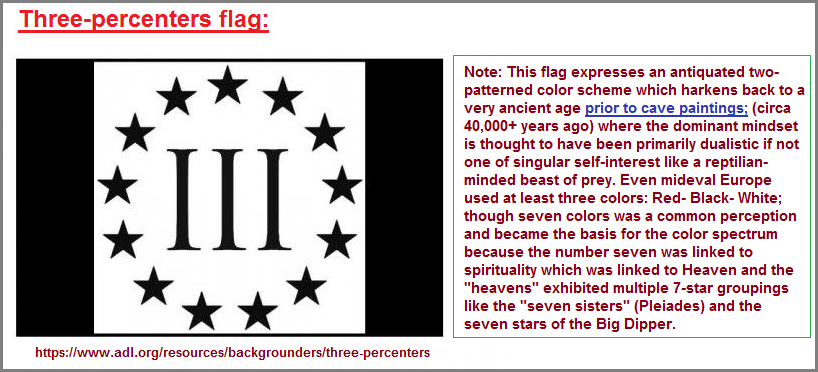
Three Percenters
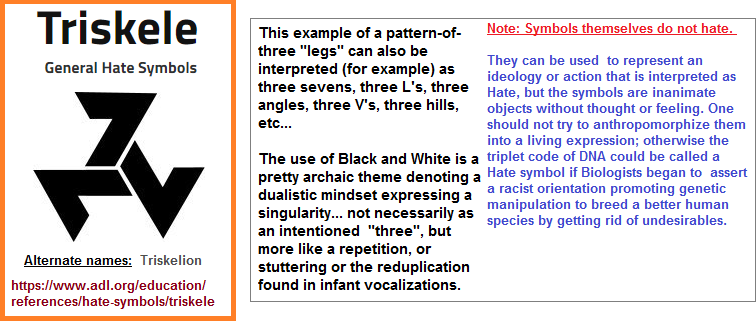
Triskele
As the title states, this page is intended for Threes Researchers. If you are unfamiliar with "threes" as a research project, the information may or may not be of interest to those who have not themselves ever noticed a frequency of patterns-of-three in different subject areas (other than the typical attention given to specific culturally-related examples such as death (or calamity) occurs in threes, people waking up some time between 3 and 4 AM (claimed by some as a spiritual awakening), or hearing three knocks, or expressions such a three times the charm, threes in fairy tales, the Trinity (in and out of Christianity), etc....
Initial Contents originated: Thursday, 13th September 2018... 8:02 AM
Page Originated: Sunday, 19th April 2020... 5:50 AM
Initial Posting of 1st page: Thursday, 13th September 2018... 8:37 AM
Initial Posting of 2nd page: Saturday, April 18th, 2020... 4:03 AM
Initial Posting of 3rd page: Sunday, April 19th, 2020... 6:06 AM
3rd Page update: Saturday, June 14th, 2025... 7:34 PM